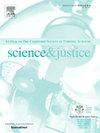研究手持近红外光谱法用于法医体液分析
IF 1.9
4区 医学
Q2 MEDICINE, LEGAL
引用次数: 0
摘要
法医案件工作和犯罪现场检查通常涉及识别和分析在各种各样的表面上发现的生物证据。在犯罪现场最常见的一种生物证据是体液,如血液、精液和唾液。在调查过程中,至关重要的是要确认污渍的性质,确定它是否是体液,并确定它是哪种特定的体液。用于识别体液污渍的常见化学测试,如卡斯特-迈耶测试或Phadebas测试,本质上是推测性的,这意味着它们的特异性有限,并且存在一定的交叉反应风险。由于它们的缺点,目前的文献主要集中在开发针对流体特异性生物标志物或化学特征的验证性测试。该研究探讨了手持式商用近红外光谱仪识别体液污渍的能力,以及获取有关供体证据来源的相关信息,如生物性别。为此,收集了健康男性和女性志愿者的血液、精液和唾液样本,将其存放在玻璃基板上,并在长达4周的不同时间点进行分析。收集到的光谱数据用于建立一个训练库,根据该库设计化学计量模型,用于区分体液和识别个体证据来源的生物性别。一旦设计出合适的模型,这些模型就会与新的血液样本、精液样本、唾液样本以及家用产品样本(假血液、牙膏、苹果汁)进行测试,这些样本已知与体液污渍相似,或者在常规推定测试中产生假阳性结果。虽然还需要收集更多的数据和建立模型来识别其他体液,以及捐赠者的生理性别,但本研究的结果进一步证实了这种技术能够识别血渍,假阳性发生率低,是目前推定检测的一种快速、负担得起和非破坏性的替代方法。本文章由计算机程序翻译,如有差异,请以英文原文为准。
Investigating handheld near-infrared spectroscopy for forensic body fluid analysis
Forensic casework and crime scene examination will often involve the identification and analysis of biological evidence found on a wide variety of surfaces. One type of biological evidence most commonly encountered at the crime scene is body fluids, such as blood, semen and saliva. During an investigation, it is crucial to confirm the nature of a stain, determine if it is a body fluid and identify which specific body fluid it is. Common chemical tests for the identification of body fluid stains, like Kastle-Meyer or Phadebas test, are presumptive in nature, meaning that they present limited specificity and a certain risk of cross-reactivity. Due to their drawbacks, current literature focuses on developing confirmatory tests that target fluid-specific biomarkers or chemical signatures. The study presented explores the capability of a handheld commercial near-infrared spectrometer for the identification of body fluid stains, as well as obtaining relevant information concerning the donor source of the evidence, such as their biological sex. For this purpose, samples of blood, semen and saliva from healthy human male and female volunteers were gathered, deposited on glass substrates, and analysed at different points in time up to 4 weeks. The spectral data collected was used to build a training library from which chemometric models were designed for the discrimination of body fluids and the identification of the biological sex of the individual source of the evidence. Once suitable models were designed, these were tested against new samples of blood, semen, and saliva, along with samples of household products—fake blood, toothpaste, apple juice— known to appear similar to a body fluid stain or produce false positive results with routine presumptive tests. Although additional data gathering and modelling are still required for the identification of other body fluids, as well as the biological sex of the donor, the results in this study further confirm the capability of this technique to identify blood stains with a low incidence of false positives, presenting itself as an alternative to current presumptive tests that is fast, affordable, and non-destructive.
求助全文
通过发布文献求助,成功后即可免费获取论文全文。
去求助
来源期刊

Science & Justice
医学-病理学
CiteScore
4.20
自引率
15.80%
发文量
98
审稿时长
81 days
期刊介绍:
Science & Justice provides a forum to promote communication and publication of original articles, reviews and correspondence on subjects that spark debates within the Forensic Science Community and the criminal justice sector. The journal provides a medium whereby all aspects of applying science to legal proceedings can be debated and progressed. Science & Justice is published six times a year, and will be of interest primarily to practising forensic scientists and their colleagues in related fields. It is chiefly concerned with the publication of formal scientific papers, in keeping with its international learned status, but will not accept any article describing experimentation on animals which does not meet strict ethical standards.
Promote communication and informed debate within the Forensic Science Community and the criminal justice sector.
To promote the publication of learned and original research findings from all areas of the forensic sciences and by so doing to advance the profession.
To promote the publication of case based material by way of case reviews.
To promote the publication of conference proceedings which are of interest to the forensic science community.
To provide a medium whereby all aspects of applying science to legal proceedings can be debated and progressed.
To appeal to all those with an interest in the forensic sciences.
 求助内容:
求助内容: 应助结果提醒方式:
应助结果提醒方式:


